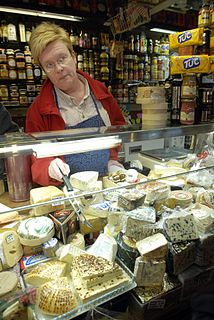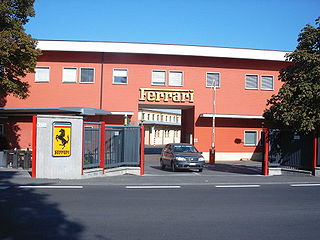Marketing refers to the process an organization undertakes to engage its target audience, build strong relationships to create value in order to capture value in return.

Retail is the process of selling consumer goods or services to customers through multiple channels of distribution to earn a profit. Retailers satisfy demand identified through a supply chain. The term "retailer" is typically applied where a service provider fills the small orders of many individuals, who are end-users, rather than large orders of a small number of wholesale, corporate or government clientele. Shopping generally refers to the act of buying products. Sometimes this is done to obtain final goods, including necessities such as food and clothing; sometimes it takes place as a recreational activity. Recreational shopping often involves window shopping and browsing: it does not always result in a purchase.
Sales promotion is one of the elements of the promotional mix. The primary elements in the promotional mix are advertising, personal selling, direct marketing and publicity/public relations. Sales promotion uses both media and non-media marketing communications for a pre-determined, limited time to increase consumer demand, stimulate market demand or improve product availability. Examples include contests, coupons, freebies, loss leaders, point of purchase displays, premiums, prizes, product samples, and rebates.

Pricing is the process whereby a business sets the price at which it will sell its products and services, and may be part of the business's marketing plan. In setting prices, the business will take into account the price at which it could acquire the goods, the manufacturing cost, the marketplace, competition, market condition, brand, and quality of product.
Tesco Ireland is the Republic of Ireland subsidiary of supermarket group Tesco. Tesco Ireland was formed by Tesco plc's 1997 purchase of the Irish retailing operations of Associated British Foods, namely Powers' Supermarkets Limited and its subsidiaries, trading as "Quinnsworth" and "Crazy Prices". There are 152 Tesco stores in operation in Ireland as of August 2018. Tesco had approximately 21% of the Irish grocery market in 2019 and its main competitors are Dunnes Stores and SuperValu.

Rebranding is a marketing strategy in which a new name, term, symbol, design, concept or combination thereof is created for an established brand with the intention of developing a new, differentiated identity in the minds of consumers, investors, competitors, and other stakeholders. Often, this involves radical changes to a brand's logo, name, legal names, image, marketing strategy, and advertising themes. Such changes typically aim to reposition the brand/company, occasionally to distance itself from negative connotations of the previous branding, or to move the brand upmarket; they may also communicate a new message a new board of directors wishes to communicate.
Marketing Communications refers to the use of different marketing channels and tools in combination. Marketing communication channels focus on any way a business communicates a message to its desired market, or the market in general. A marketing communication tool can be anything from: advertising, personal selling, direct marketing, sponsorship, communication, social media and promotion to public relations.
A rebate is a form of buying discount and is an amount paid by way of reduction, return, or refund that is paid retrospectively. It is a type of sales promotion that marketers use primarily as incentives or supplements to product sales. Rebates are also used as a means of enticing price-sensitive consumers into purchasing a product. The mail-in rebate (MIR) is the most common. A MIR entitles the buyer to mail in a coupon, receipt, and barcode in order to receive a check for a particular amount, depending on the particular product, time, and often place of purchase. Rebates are offered by either the retailer or the product manufacturer. Large stores often work in conjunction with manufacturers, usually requiring two or sometimes three separate rebates for each item, and sometimes are valid only at a single store. Rebate forms and special receipts are sometimes printed by the cash register at time of purchase on a separate receipt or available online for download. In some cases, the rebate may be available immediately, in which case it is referred to as an instant rebate. Some rebate programs offer several payout options to consumers, including a paper check, a prepaid card that can be spent immediately without a trip to the bank, or even as a PayPal payout.
Green brands are those brands that consumers associate with environmental conservation and sustainable business practices.

A business can use a variety of pricing strategies when selling a product or service. To determine the most effective pricing strategy for a company, senior executives need to first identify the company's pricing position, pricing segment, pricing capability and their competitive pricing reaction strategy. Pricing strategies and tactics vary from company to company, and also differ across countries, cultures, industries and over time, with the maturing of industries and markets and changes in wider economic conditions.

No Name is a line of generic brand grocery and household products sold by Loblaw Companies Limited, Canada's largest food retailer. No Name products are available in stores across Canada that include Loblaws, No Frills, Dominion, Real Canadian Superstore, Your Independent Grocer, valu-mart, Zehrs, Fortinos, Provigo, Extra Foods, Super-Valu, Maxi, Atlantic Superstore, and Shoppers Drug Mart.
A marketing channel consists of the people, organizations, and activities necessary to transfer the ownership of goods from the point of production to the point of consumption. It is the way products get to the end-user, the consumer; and is also known as a distribution channel. A marketing channel is a useful tool for management, and is crucial to creating an effective and well-planned marketing strategy.
Trade marketing is a discipline of marketing that relates to increasing the demand at wholesaler, retailer, or distributor level rather than at the consumer level. However, there is a need to continue with Brand Management strategies to sustain the need at the consumer end. A shopper, who may or may not be the consumer him/herself, is the one who identifies and purchases a product from a retailer even though they might not purchase the goods at the end of the day. To ensure that a retailer promotes a company's product against competitors', that company must market its product to the retailers as well by offering steep discounts versus competitors. Trade marketing might also include offering various tangible/intangible benefits to retailers such as commissions made for sales.
Shopper marketing is "shopper marketing [is] brand marketing in retail environment."In shopper marketing, manufacturers target portions of their marketing investment at specific retailers or retail environments. Such targeting is dependent on the congruency of objectives, targets and strategies between the manufacturer and a given retailer or a given type of retail environment.

A brand is a name, term, design, symbol or any other feature that identifies one seller's good or service as distinct from those of other sellers. Brands are used in business, marketing, and advertising for recognition and, importantly, to create and store value as brand equity for the object identified, to the benefit of the brand's customers, its owners and shareholders. Name brands are sometimes distinguished from generic or store brands.
In business and marketing, “trade” refers to the relationship between manufacturers and retailers. Trade Promotion refers to marketing activities that are executed in retail between these two partners. Trade Promotion is a marketing technique aimed at increasing demand for products in retail stores based on special pricing, display fixtures, demonstrations, value-added bonuses, no-obligation gifts, and more.
Sensory branding is a type of marketing that appeals to all the senses in relation to the brand. It uses the senses to relate with customers on an emotional level. Brands can forge emotional associations in the customers' minds by appealing to their senses. A multi-sensory brand experience generates certain beliefs, feelings, thoughts and opinions to create a brandgon image in the consumer's mind.
In marketing, a corporate anniversary is a celebration of a firm's continued existence after a particular number of years. The celebration is a media event which can help a firm achieve diverse marketing goals, such as promoting its corporate identity, boosting employee morale, building greater investor confidence, and encouraging sales. As a public relations opportunity, it is a way for a firm to tout past accomplishments while strengthening relationships with employees and customers and investors. The duration of the celebration itself can vary considerably, from an hour or day to activities happening throughout the year. Many businesses use an anniversary to express gratitude for past success. Generally, larger corporations have the means to stage more elaborate celebrations.
Off-price is a trading format based on discount pricing. Off-price retailers are independent of manufacturers and buy large volumes of branded goods directly from them. The off-price retail model relies on the purchase of over-produced, or excess, branded goods at a lower price, thus being able to sell to consumers at a discount compared to other stores which purchased an initial run. Among the largest retailers of this type are TJX Companies and Ross Stores. The model is more common in countries that import fashion-oriented or household goods, as the discount role in producer countries is usually filled by factory outlets or small-scale open-air marketplaces.
Organic food culture refers to a recent social and cultural trend in which there has been an increased interest in organic food due to the rise of media coverage on health, food safety, and environmental dangers of pesticides. This attitude considers food a central requirement for health, but it does not neglect the aesthetic or hedonistic (pleasurable) aspects of food consumption.







